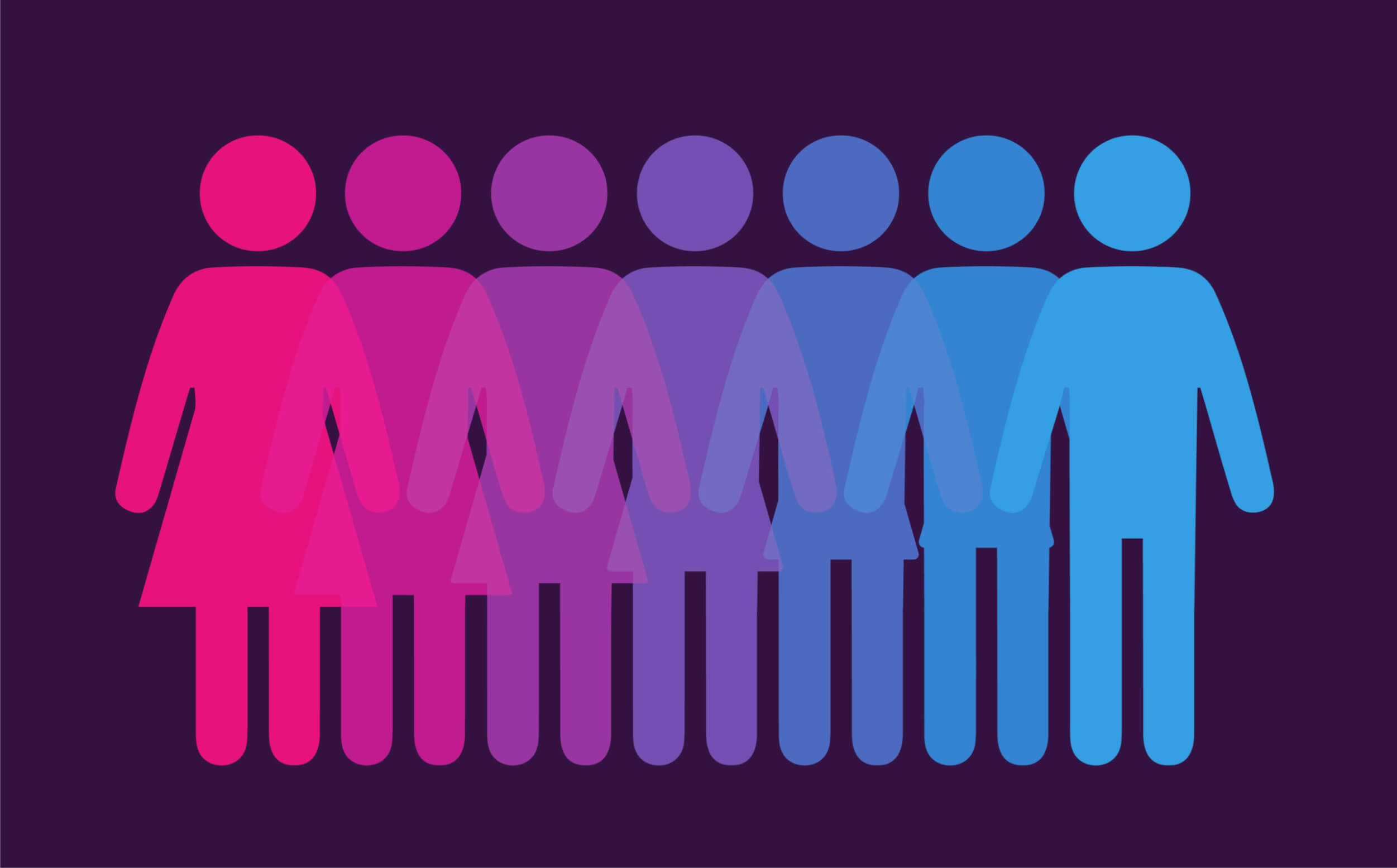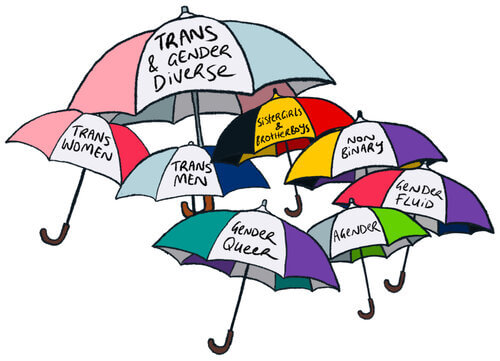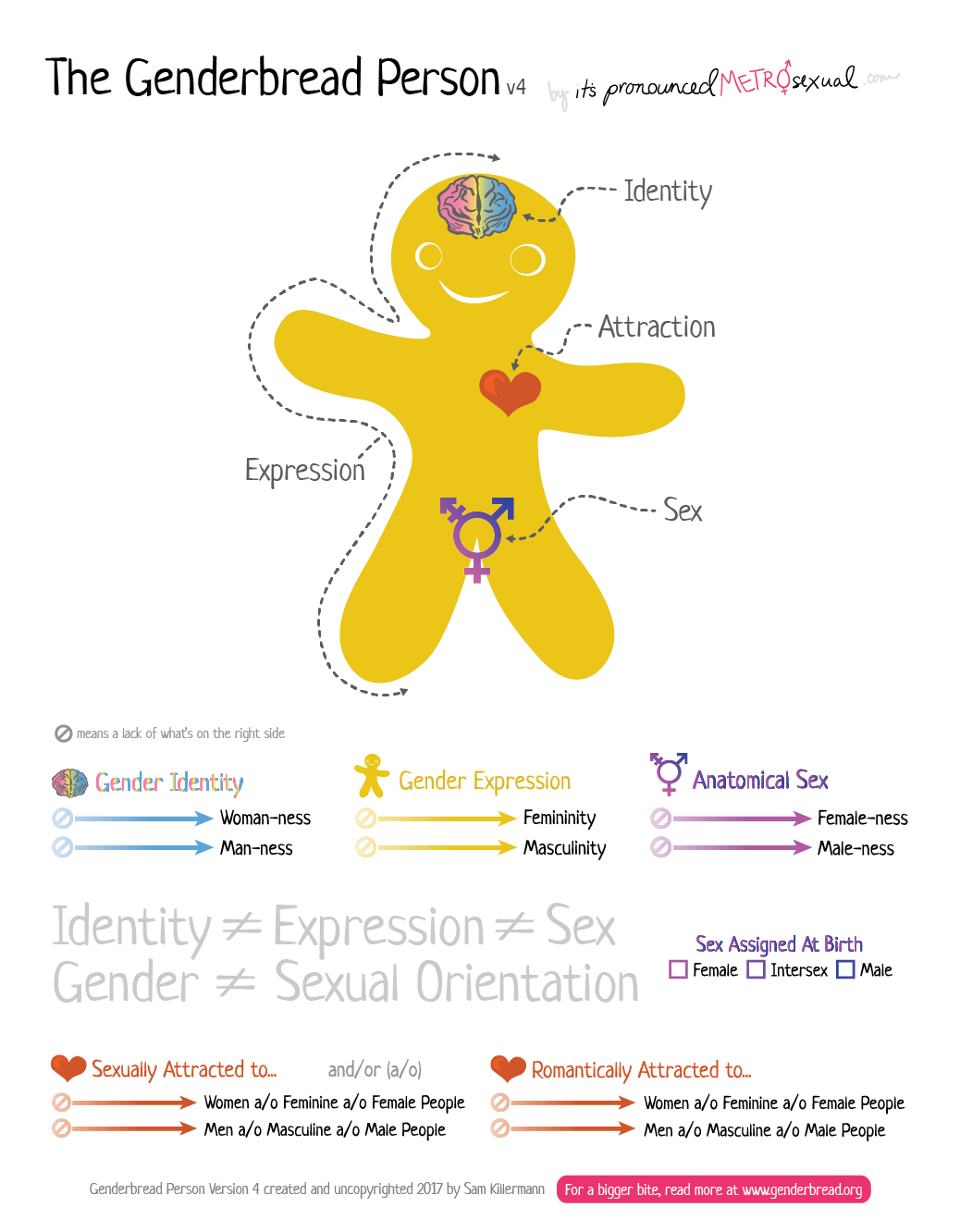6 ways to support the trans community
AU counsellor Kelly Gordon shares suggestions for how to be a better ally for International Transgender Day of Visibility on March 31, and every day
While trans and gender-non-conforming people have existed for as long as there have been people, these days more folks are out of the closet, living as their authentic selves and outwardly expressing their gender identity.
Unfortunately, the harsh reality is that trans folks continue to face discrimination simply for being who they are, including discrimination from some U.S. lawmakers passing anti-transgender legislation.
Days like the International Trans Day of Visibility and Transgender Day of Remembrance, on March 31 and Nov. 20, respectfully, are dedicated to celebrating trans and gender-non-conforming people and raising awareness about this discrimination.
This issue is particularly important for Kelly Gordon, a counsellor at AU. They describe themselves as non-binary, an umbrella term that refers to folks who do not conform to traditional views of a male-female gender binary beliefs, typically understood as members of the trans community. This identity has helped Gordon shape their approach to the role of counsellor, and their decision to prioritize issues of equity, diversity, and inclusion (EDI).
“I made the decision that I would do my best to stay visible and be involved in EDI and inclusive language, specifically related to the LGBTQIA2S+ community, whenever and wherever I could,” they said.
Gordon has helped put together this list of 6 easy ways for all of us to specifically support our trans and gender-non-conforming friends, coworkers, and family members—and to support the community more broadly.
1. Educate yourself
It’s OK to have questions and want to learn more, but don’t start asking your trans friends and family members every question that comes to mind—they may not want to be your personal research assistant!
There are hundreds, even thousands of different resources out there that can help you better understand the experience of members of the trans community. You could get started with some of the resources shared on the following pages:
2. Use and promote inclusive, gender-neutral language
Language is a powerful tool that can have subtle but significant impacts on those around us, but we don’t always think about why we use the words we do, and how those words can affect people.
With little effort, we can develop new habits and make our vocabulary more inclusive. One easy example is to use the pronoun “they” when referring to people or groups of people where gender isn’t relevant. Instead of saying, “a student will be supported by his or her tutor,” you can simply say, “a student will be supported by their tutor.”
“I’ve heard the argument that they/them for one singular person is not grammatically correct, and to be honest I struggled with this myself, but it actually is! And has been since Shakespeare,” Gordon said. “Most people even use it themselves in everyday speech when referring to a person whose gender is unknown.”
Other examples of gender-neutral language include saying “humanity” instead of “mankind,” “you folks” instead of “you guys,” or, “Can I please have everyone’s attention?” instead of “Ladies and gentlemen, can I please have your attention?”
“I made the decision that I would do my best to stay visible and be involved in EDI and inclusive language, specifically related to the LGBTQIA2S+ community, whenever and wherever I could.”
– AU counsellor Kelly Gordon
3. Use people’s affirmed names and pronouns
Pronouns and names aren’t just a preference, like preferring coffee instead of tea. Someone’s affirmed names and pronouns are a fundamental part of any person’s identity.
This may seem obvious, but it bears repeating: when someone introduces themselves with their name and pronouns, they know better than anyone else. That is the correct name to use and those are the correct pronouns, regardless what other assumptions or knowledge you might have about a person.
“I’ll tell you, I get a serious boost of dopamine every time someone uses my correct pronouns,” Gordon said. “It’s so nice to feel seen in a world that doesn’t always notice I’m there, and doesn’t always make space for me to exist.”

4. Introduce yourself using your pronouns
Just like we can avoid making assumptions about anyone’s gender, we can also avoid having others make assumptions about our own gender by introducing ourselves using our pronouns, and including our pronouns in our email signature. Introducing yourself with your pronouns is as simple as saying, “My name is Kelly and my pronouns are they/them.”
For people whose gender identity might not reflect how others see them, introducing themselves with their pronouns can sometimes be daunting. You can support the trans and gender-non-conforming community and normalize this by making specific reference to your own pronouns.
“As a they/them myself, I very much appreciate that!” Gordon said.
“I’ll tell you, I get a serious boost of dopamine every time someone uses my correct pronouns. It’s so nice to feel seen in a world that doesn’t always notice I’m there, and doesn’t always make space for me to exist.”
– AU counsellor Kelly Gordon
5. Make your support known in a way that’s comfortable to you
Being an ally can mean different things to different people. Not everyone has to show their support in the same way, and not everyone feels comfortable showing their support in the same way!
For some, supporting the trans community might mean confronting someone who uses aggressively disrespectful and discriminatory language. For others, just thinking about this kind of confrontation will trigger anxiety—and that’s OK!
“There are lots of different ways to be an ally. Everyone has different preferences, skills, and abilities, with which to help,” Gordon said.
They pointed to the 7 types of allies identified by the Inclusive Leaders Group as a good resource for anyone looking to understand how they can be a better ally within their own comfort level and personality type.

6. Be willing to make mistakes along the way!
We all make mistakes! But you shouldn’t let that slow you down. Instead, be willing to learn and grow from your mistakes, instead of dwelling on them or arguing.
For example, if you inadvertently use the wrong name or pronoun for someone and they correct you, you don’t need to make a big production of an apology. You can simply say, “Thanks for correcting me,” and move on.
Likewise, you may inadvertently use language that someone tells you is outdated or harmful. Even if you didn’t intend any harm with your words, accept that you may have caused harm, apologize, and try to do better.
“I think it’s important to stay open and listen to the folks who are in those underrepresented groups and what they have to say,” Gordon said. “Let them control the narrative and guide you through it.”

